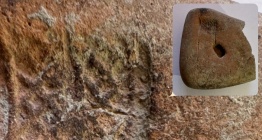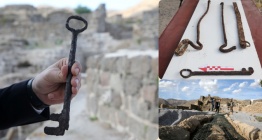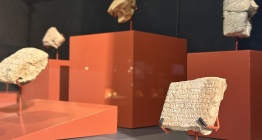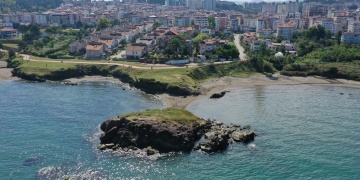Ancient city of Gordion in Turkiye's capital Ankara added to UNESCO World Heritage list
The decision was taken at the 45th UNESCO World Heritage Committee meeting held in Saudi Arabia’s capital Riyadh.
Gordion is one of the most important historical centers in the ancient Near East, according to UNESCO’s website. The ancient site lies around 90 kilometers (56 miles) southwest of Ankara at the intersection of the great empires to the east such as Assyrians, Babylonians, Hittites and the west Greeks and Romans.
The site “occupied a strategic position on nearly all trade routes that linked the Aegean and Mediterranean with the Near East,” it added.
“Gordion’s historical significance derives from its very long and complex sequence of occupation that spans nearly 4,500 years, from the Early Bronze Age (ca. 2,500 B.C.) to the Medieval period (ca. 1400 A.D.) and thereafter to the present day,” the website said.
“The Phrygian kingdom was ruled by King Midas, whose wealth was expressed by the stories of his Golden Touch, and long after the demise of his kingdom, the Phrygian citadel became closely associated with the triumphs of Alexander the Great in the late fourth century B.C.” it added.
What ise the Gordian knot?
In 333 BC, Alexander the Great famously dealt with the Gordian Knot (also spelled Gordion), an intricate knot that secured the yoke to the pole of a Phrygian wagon on the acropolis of a city.
This wagon had historical connections to figures such as Midas and Gordias; legend has it that whoever could untangle the knot would gain great power and could “conquer Asia.”
Instead of untying it, Alexander instead took his sword and cut through it. Two years later, in 331 BC, he defeated the Persian Emperor Darius, dealing the final blow to his Asian empire.








 Buz devrinde 16 aylıkken ölen bebeğin mavi gözlü olduğu anlaşıldı
Buz devrinde 16 aylıkken ölen bebeğin mavi gözlü olduğu anlaşıldı  Ayanikola Kilisesi Restorasyon ve Çevre Düzenleme Projes hayata geçiriliyor
Ayanikola Kilisesi Restorasyon ve Çevre Düzenleme Projes hayata geçiriliyor  Tarihi Kentler Birliği'nin ekim ayı encümen toplantısı, Şanlıurfa'da yapıldı
Tarihi Kentler Birliği'nin ekim ayı encümen toplantısı, Şanlıurfa'da yapıldı  Yazma Eserler uzmanı Prof. Dr. Kasım Al-Sâmerrai: Oryantalistler dilin fıkhını bilmiyor
Yazma Eserler uzmanı Prof. Dr. Kasım Al-Sâmerrai: Oryantalistler dilin fıkhını bilmiyor 




